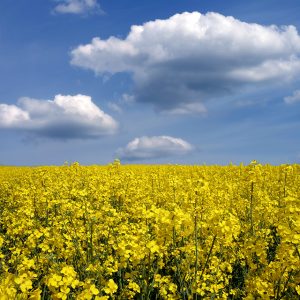July 13, 2016
 Imagine a village that boasts an open meadow with tall grasses accessible to all.
Imagine a village that boasts an open meadow with tall grasses accessible to all.
A local farming family has grazed sheep there for years without issue. But when the rest of the town’s sheep farmers discover its lush pastures, it becomes over-grazed and unable to feed anyone’s sheep.
The commons – common-pool resources like the meadow – are no stranger to conflict and debate. But as two sustainability scientists at Arizona State University explain in the latest edition of their book, Sustaining the Commons, they are also not without solutions.
The Commons
Marco Janssen, a professor in the School of Sustainability and co-author of the book, explains it this way.
“The dilemma of the commons manifests when individuals take from a common resource without considering other users. These abusers may collect all the benefit at first, but will bear the burden of any damage to – or depletion of – the resource shared by the whole group,” he says.
The scenario of sheep grazing in an open meadow is quintessential, but issues of the commons are not limited to land use. In “Sustaining the Commons,” Janssen and co-author Marty Anderies – also a School of Sustainability professor – emphasize the widespread presence of the commons today and its application for our everyday lives.
“Water, education, sports, internet, and even a shared cake at a birthday party can be treated as commons,” says Janssen.
The overuse of certain modern commons could have serious consequences for us all. Janssen gives the example of antibiotics, explaining how accessibility and overuse have led to adaptive, antibiotic-resistant bacteria that hinder humans’ ability to be healed through conventional medicine. Anderies adds the waste assimilation capacity of our atmosphere to the list.
“People often don't think of ‘somewhere to throw your trash’ as a resource,” says Anderies, “But, of course, after a moment's thought, it is.”
This is what makes the book so relevant today, even though the concept is not new. In fact, it was the late Elinor Ostrom – a Nobel Prize winner and distinguished ASU sustainability scientist – who inspired Janssen and Anderies to write the initial version of their book.
A Nobel Influence
Ostrom, who collaborated with the authors while at ASU, challenged classic commons theories, like those expressed in Garrett Hardin’s 1968 article “The Tragedy of the Commons.”
Hardin’s research expressed the inevitability of overuse and degradation to all shared resources, and maintained that privatization or government control were the only two solutions. Conversely, through empirical research and hands-on experimentation, Ostrom demonstrated that other solutions exist – most notably, self-governance.
In her own book “Governing the Commons,” Ostrom asserted that small communities are better suited to formulate their own solutions, as they have insights that an outsider does not.
She also denounced the panacea – or cure-all – approach to solving Commons problems. Instead, she insisted that every community has a different set of attributes, and that problems and their respective solutions must be diagnosed internally.
Sustaining the Commons
Janssen and Anderies wanted undergraduate students to have access to Ostrom’s discoveries in a way they could understand, but her commons analysis was initially taught at the graduate level only.
The book advances Ostrom’s work by translating her theories for a broader audience and adding modern commons examples, like a focus on urban systems. It also provides a range of powerful tools to conceptualize commons dilemmas so that readers can find the appropriate solutions.
The newly-released edition of the book addresses hot topics like climate change and the failure of traditional top-down, polycentric governance to provide adequate solutions. The updates provide an expanded framework for assessing sustainability challenges, analyzing threats to the commons and pinpointing methods for increasing resilience.
“If a person is sick, the doctor tries to diagnose them and find the right medicine,” says Janssen. “We should do the same for sustainability problems.”
According to the authors, the most important goal of “Sustaining the Commons” is to open our eyes to the various social dilemmas around us and to show how common-pool resources affect so many aspects of our lives.

